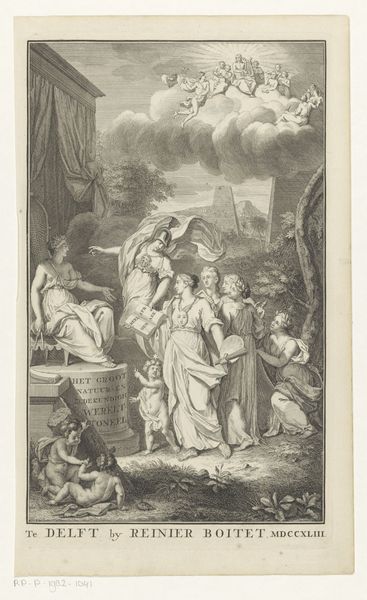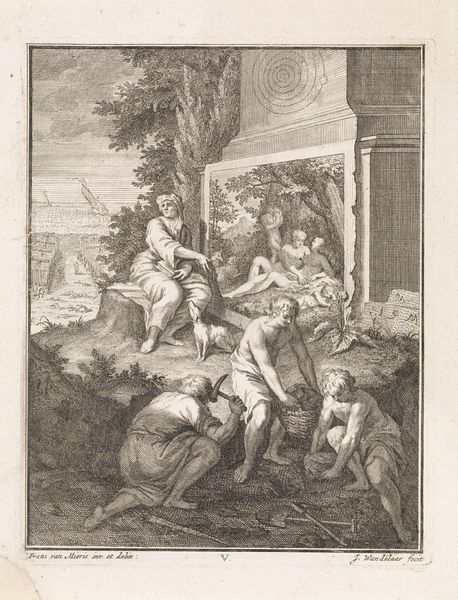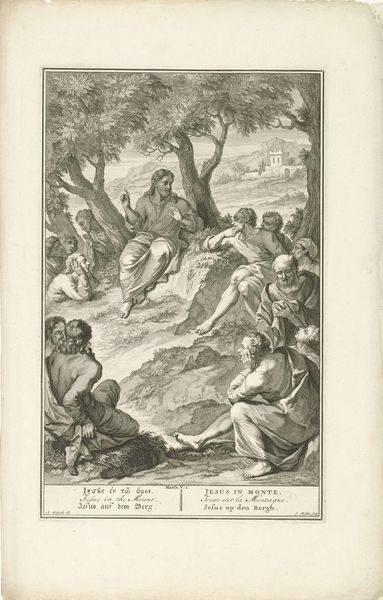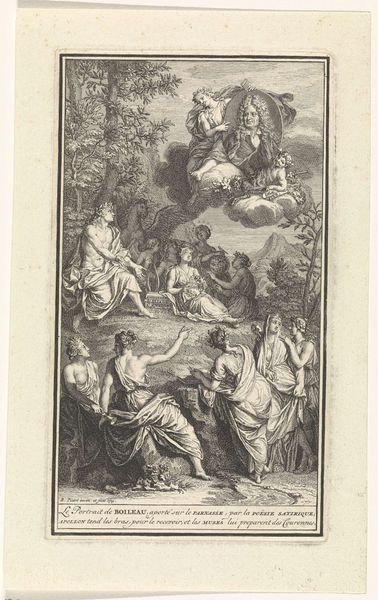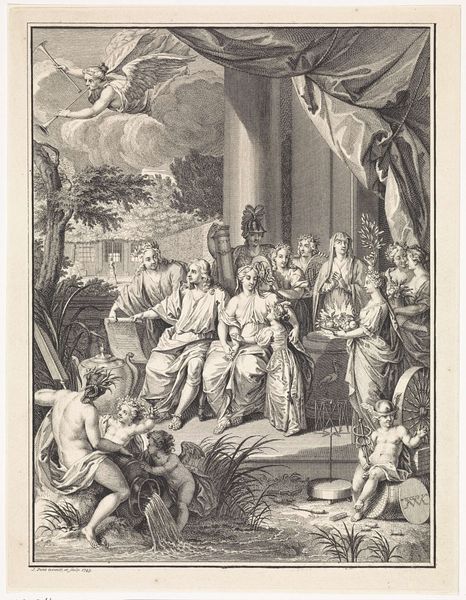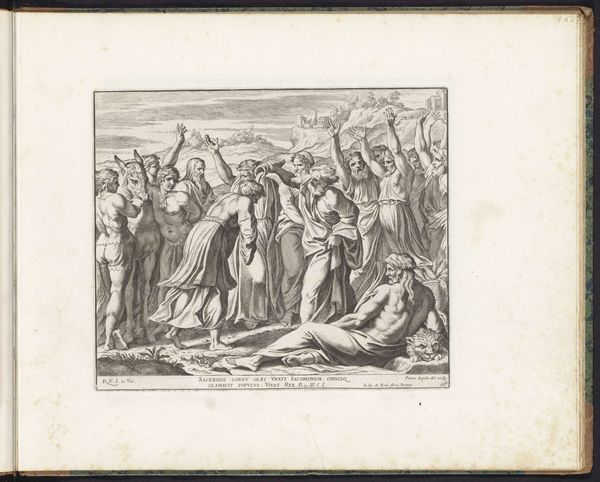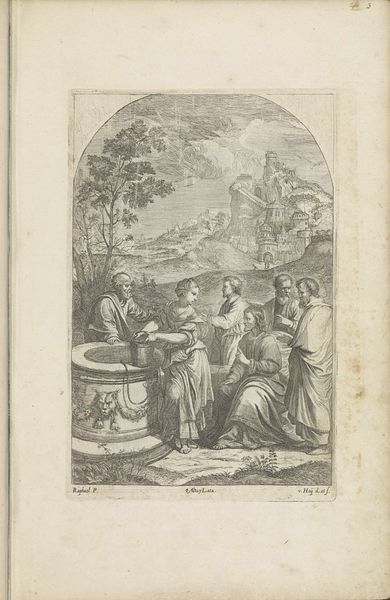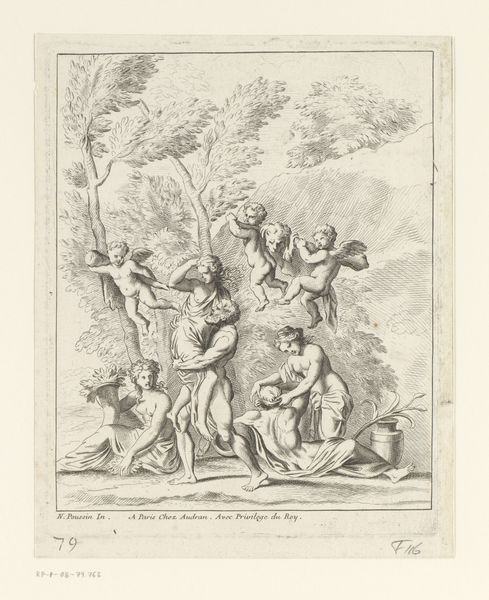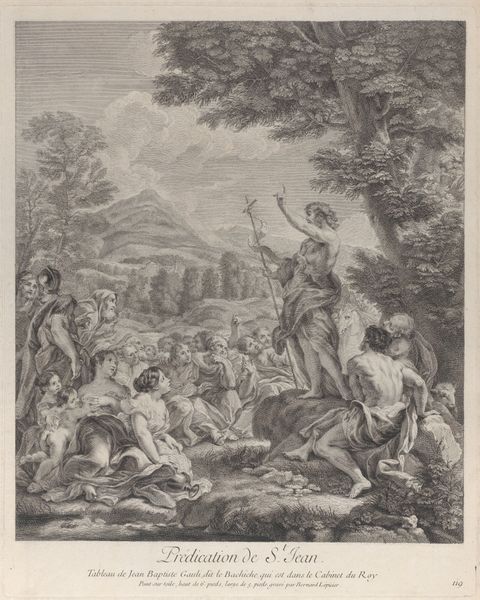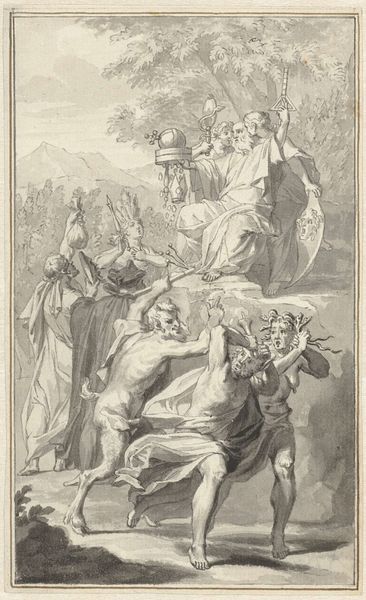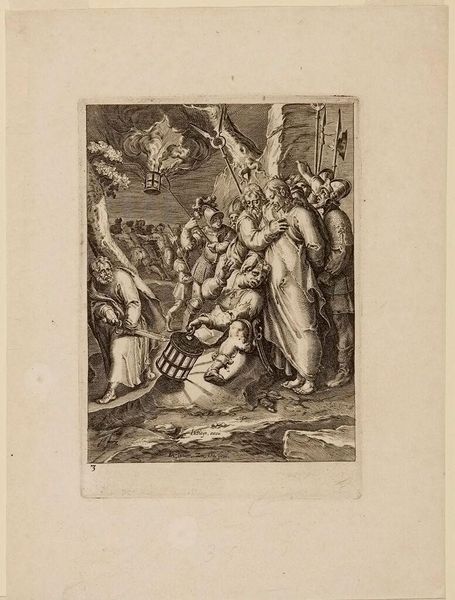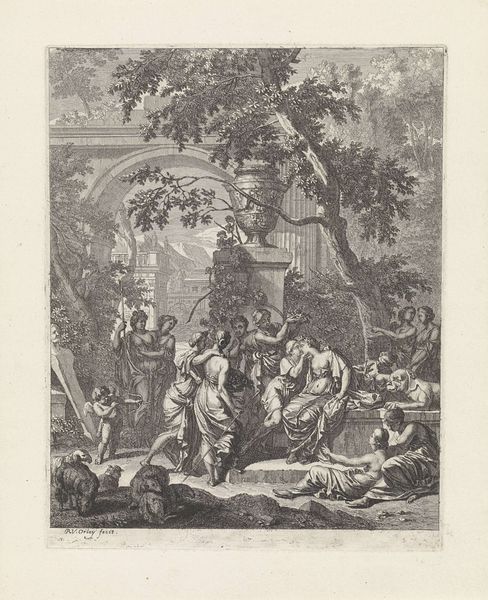
print, engraving
#
baroque
# print
#
old engraving style
#
figuration
#
line
#
history-painting
#
engraving
Dimensions: height 350 mm, width 220 mm
Copyright: Rijks Museum: Open Domain
Curator: Oh, this print immediately gives me a shiver, doesn't it you? Something about the high contrast of the lines... the way that scene unfolds. Editor: Indeed. What we are looking at here is titled “Mozes wordt gevonden door de dochter van de farao," or “Moses Found by Pharaoh's Daughter,” an engraving crafted sometime between 1705 and 1728 by Joseph Mulder. Curator: Mulder… It's the story, though. Finding Moses… There’s an intensity, a silent scream within the delicate lines. I imagine Mulder tracing and etching with fierce precision. Look at how they're composed, this almost choreographed reaction to seeing the babe, as if his fate ripples outward. Editor: And what about the material conditions that enable the distribution and viewing of a reproduction like this one? I see an incredibly detailed, baroque composition; so much labor and skill distilled to its printed form for wider distribution to new audiences beyond a unique painting. Consider also how printmaking facilitates a shift in consumption patterns: now, sacred imagery can reach a new, expanding bourgeois public who collect prints and use them as decor for their homes. Curator: Right! Like little seeds of stories spreading on paper! I hadn’t thought about how the engraving actually gives the story new legs... Makes me think about how myths travel—transforming each time they’re retold. Moses in a paper boat instead of a bulrush basket – almost. What’s also fascinating is how, for many viewers in 18th century Holland, the story of Moses became domesticated by finding it on the wall next to the fireplace or at the bedside! Editor: Precisely. By converting this pivotal historical narrative into a widely disseminated domestic object, Mulder democratized it by making accessible to many who otherwise might not have encountered such a profound biblical scene. Curator: It’s wild how craft mediates experience… Thank you Mulder, you are my Moses today. Editor: Ultimately, the history of art is contingent on such technologies. In the case of this particular composition, Mulder transformed and disseminated, through exacting methods, art and knowledge for new historical audiences.
Comments
No comments
Be the first to comment and join the conversation on the ultimate creative platform.
